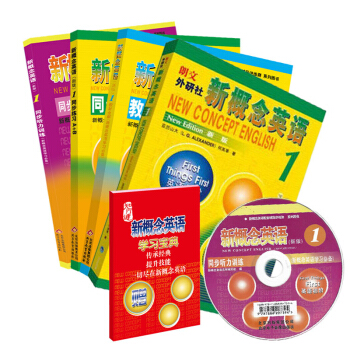

具体描述
编辑推荐
责任,是诠释爱的途径,全球发行语言超过100种,总销量超500,000,000册。
《小王子(博彩经典双语典藏)》销量仅次于《圣经》,数亿人为之感动,与小王子一起,进入这个被大人忘却的纯净世界,全新精装典藏,翻译晓畅,打造经典双语典藏书系。装帧精美、设计简约大气,选用国内精良、经典的版本,国内名师倾力翻译,首次推出经典双语典藏丛书。畅销经典,销量保证,被翻译成108种语言,全球总销量超过五亿册,仅次于《圣经》。作者用通俗易懂的语言写出了引人深思的哲理和令人感动的韵味。整个童话,文字纯净朴素,形式简洁干净,但是却蕴藏着智慧的光芒,充满着诗意的忧郁、淡淡的哀愁,读起来让人回味无穷。中英对照,图文并茂,作者手绘插画强势回归,阅读流畅。
内容简介
《小王子(博彩经典 双语典藏)》是一部忧伤的哲理童话,是献给所有的孩子,以及所有“曾经是个孩子”的大人的寓言故事。整部童话文字很纯净朴素,形式简洁,但是却蕴藏着智慧的光芒。此书自面市以来,曾被翻译成108种语言,全球畅销近5亿本,销量仅次于《圣经》,数亿人为之感动。作者通过一位来自不同星球的小王子,用通俗易懂的语言,写出了引人深思的哲理和令人感动的韵味。整部童话充满着诗意的忧郁、淡淡的哀愁,读起来让人回味无穷。当你翻开《小王子(博彩经典 双语典藏)》时,你也一定会为小王子的善良单纯而落泪,在他一次又一次的回忆中,与他一起,聆听玫瑰花开的声音,领悟爱的真谛与感动。
作者简介
圣埃克苏佩里,1900年6月29日生于法国里昂市。飞行家、作家。从他发表《南方邮件》到《小王子》的16年间,仅出版了6部作品,都以飞机为工具,从宇宙的高度观察世界、探索人生。这些作品篇幅不多,体裁新颖,富有想象力。在现代文学史中,安东尼·德·圣·埃克苏佩里被认为是最早关注人类生活状况的作家之一。
吴睿,毕业于陕西师范大学,大学教授,一级讲师。曾翻译出版《商务之旅:东京》、《福尔摩斯探案全集:福尔摩斯回忆录》等书籍,参与编写出版书籍《大学英语实用写作》、《新大学英语四级考试特训——写作分册》等。
内页插图
目录
Chapter1Chapter2
Chapter3
Chapter4
Chapter5
Chapter6
Chapter7
Chapter8
Chapter9
Chapter10
Chapter11
Chapter12
Chapter13
Chapter14
Chapter15
Chapter16
Chapter17
Chapter18
Chapter19
Chapter20
Chapter21
Chapter22
Chapter23
Chapter24
Chapter25
Chapter26
Chapter27
精彩书摘
1在我六岁的时候,有一次读到一本描写原始森林的名叫《真实的故事》的书,在书里我看到了一副精美的插画,插画上画的是一条蟒蛇正在吞食一只动物。这是那副画的摹本:
这本书中写道:“蟒蛇会将它们的猎物整个吞下,而且根本不咀嚼,而后猎物就再也不能动了。在此后漫长的六个月的睡眠中,蟒蛇会慢慢消化这些食物。”
当时,我想象过很多关于丛林中的奇遇。之后,我便用彩色铅笔描绘了我的第一副图画作品。我的第一号作品,就是这一幅:
我把我的这副杰作拿给大人看,并且问他们我的画是不是让他们觉得恐惧。
他们回答说:“害怕?一顶帽子有什么好怕的?”
可我画的根本不是一顶帽子,而是一条大蟒蛇正在消化一头大象。为了能让大人们看明白我的画,我又画了另外的一幅画。这次我把巨蟒肚子里的情景画了出来,这样大人们就能够看得很清楚了。这些大人总是需要解释。我的第二号作品是这样的:
不过,大人们劝我不要再画这些大蟒蛇了,不管是敞着肚皮的还是合上肚皮的,他们劝我应该把兴趣集中在地理、历史、算术、语法上。就这样,在六岁的那年,我就放弃了当职业画家这一前程美好的理想。由于我的第一号、第二号作品的不成功,我感到有些沮丧。这些大人们,仗着他们自己什么也弄不懂,就没完没了地让孩子们给他们解释,真叫孩子们讨厌。
所以后来,我不得不选择另外一个职业——驾驶飞机。为此,我几乎飞遍了世界各地。的确,地理学给了我很多帮助。只要看一眼,我就能分辨出中国和亚里桑那。如果飞机在夜里迷失了航向,这些知识是非常有用的。
我的一生中,曾经密切接触过许多严谨的人,他们无一例外,只关心事情的结果。我在这群大人们中间生活了很长一段时间。我仔细地观察过他们,但这并没有多大地改变我对他们的看法。
每当遇到一个脑筋看起来稍微清楚一点的大人时,我便把我一直保存着的第一号作品拿出来测试他。我想知道他是否真的能理解我的画。可是,我得到的回答总是:“这是顶帽子。”于是,我就不和他谈巨蟒、原始森林或者星星之类的事。我只得迁就他们的水平,和他们谈些桥牌呀、高尔夫球呀、政治呀、领带呀这些。就这样,大人们十分高兴能认识像我这样懂道理的人。
Chapter 1
Once when I was six years old I saw a magnificent picture in a book, called True Stories from Nature, about the primeval forest. It was a picture of a boa constrictor in the act of swallowing an animal. Here is a copy of the drawing.
In the book it said: ““Boa constrictors swallow their prey whole, without chewing it. After that they are not able to move, and they sleep through the six months that they need for digestion.”“
I pondered deeply, then, over the adventures of the jungle. And after some work with a colored pencil I succeeded in making my first drawing. My Drawing Number One. It looked like this:
I showed my masterpiece to the grownups, and asked them whether the drawing frightened them.
But they answered: ““Frighten· Why should any one be frightened by a hat·”“
My drawing was not a picture of a hat. It was a picture of a boa constrictor digesting an elephant. But since the grownups were not able to understand it, I made another drawing: I drew the inside of the boa constrictor, so that the grownups could see it clearly. They always need to have things explained. My Drawing Number Two looked like this:
The grownups' response, this time, was to advise me to lay aside my drawings of boa constrictors, whether from the inside or the outside, and devote myself instead to geography, history, arithmetic and grammar. That is why, at the age of six, I gave up what might have been a magnificent career as a painter. I had been disheartened by the failure of my Drawing Number One and my Drawing Number Two. Grownups never understand anything by themselves, and it is tiresome for children to be always and forever explaining things to them.
So then I chose another profession, and learned to pilot airplanes. I have flown a little over all parts of the world; and it is true that geography has been very useful to me. At a glance I can distinguish China from Arizona. If one gets lost in the night, such knowledge is valuable.
In the course of this life I have had a great many encounters with a great many people who have been concerned with matters of consequence. I have lived a great deal among grownups. I have seen them intimately, close at hand. And that hasn't much improved my opinion of them.
Whenever I met one of them who seemed to me at all clearsighted, I tried the experiment of showing him my Drawing Number One, which I have always kept. I would try to find out, so, if this was a person of true understanding. But, whoever it was, he, or she, would always say:
““That is a hat.”“
Then I would never talk to that person about boa constrictors, or primeval forests, or stars. I would bring myself down to his level. I would talk to him about bridge, and golf, and politics, and neckties. And the grownup would be greatly pleased to have met such a sensible man.
2
我就这样孤独地生活着,身边没有一个能真正谈得来的朋友,直到六年前,我的飞机在撒哈拉沙漠上发生了一次故障。我的发动机有个东西出了点问题。由于当时我既没有带机械师,也没有带乘客,于是我就试图独自动手完成这个困难的维修工作。这个工作对我来说,是个生死攸关的问题。我随身带的水最多能够饮用一个星期。
第一天晚上,我就在这荒无人烟的大沙漠里睡了一夜。比起远远地漂流在汪洋大海中的小木排上的落难者,我明显要孤独得多。而在第二天黎明时,当一个奇怪的小声音叫醒我的时候,你们可以想象得到,我当时有多么吃惊。这个小小的声音说道:
“麻烦……请你给我画一只绵羊,好吗?”
“什么!”
“请你给我画一只绵羊……”
我像是遭到了雷击一般,瞬间就站立了起来。我使劲地揉了揉双眼,仔细地观察。接着,我看见一个长相十分奇怪的小家伙,正在很认真地盯着我看。这是我后来给他画出来的最好的一副肖像画:
当然,我画出来的肖像肯定没有他本身的模样可爱。不过,这可不能怨我。六岁时,大人们的建议就让我彻底放弃了当画家的理想,所以除了画过那张敞开肚皮的与合着肚皮的蟒蛇以外,我后来根本没有学过画画。
我惊讶地看着这突然冒出来的小家伙,眼睛瞪得溜圆。你们不要忘记了,我当时可身处千里之外、远离人烟的地方呀。可眼前的这个小家伙,既不像是迷了路的样子,也没有流露出半点疲乏、饥渴、惧怕的神情。总而言之,他丝毫不像是一个迷失在荒无人烟的大沙漠中的孩子。当我终于能够开口说话的时候,我问他说:
“唉,你在这儿干什么?”
尽管如此,他依旧不慌不忙地对我重复他的要求,仿佛是在说一件十分重要的事情:
“麻烦你……给我画一只羊……”
当一个突然出现的谜一样的人出现你面前的时候,你绝对不敢不听从他的命令。此时的我身处在荒无人烟的沙漠上,既面临着死亡的威胁,又加上这个听上去让我觉得十分荒诞的画画的要求,尽管如此,可我还是掏出了一张纸和一支钢笔。不过,此时的我能记起的只有地理、历史、算术和语法。于是,我有点不大高兴地对小家伙坦白说我不会画画。他回答我说:
“没有关系,给我画一只羊吧!”
由于我从来没有画过羊,所以我就给他重新画了一副我仅仅会画的那两副画中的一幅——一只肚子胀得鼓起来的巨蟒。
“不!不!我不要蟒蛇,它肚子里还有一头象。”
我听了他的话,惊讶得目瞪口呆。他接着说:“巨蟒太恐怖了,大象又太庞大,占地方。我的家非常小,我只需要一只羊。你给我画一只绵羊吧。”
于是我就给他画了一只绵羊。
他聚精会神地看着,随后又说:
“我不要,这只羊已经病得很严重了。你给我重新画一只。”
我又画了起来。
这位朋友并没有丝毫责怪我的意思,反而天真可爱地笑了,他说:“你看,你画的不是一只小绵羊,而是一头公羊,它还长着犄角呢。”
于是我又重新画了一张。
但是,这副画同前几副一样,又被他否定了。
“这一只羊太老了。我想要一只能活得长久一点的小绵羊。”
这次我不耐烦了。因为我急于要拆卸发动机,于是就草草画了这张画,随口对他解释说:
“这是一只箱子,你要的羊就在里面。”
这时,我十分惊讶地看到,我的这位小朋友终于露出了笑脸。他说:
“这正是我想要的小绵羊,你说,喂养这只羊需要很多草吗?”
“为什么问这个呢?”
“因为我住的地方非常小……”
“我给你画的是一只很小的小羊,地方再小也够它住的。”
他把脑袋靠近这张画。
“并不像你说的那么小……瞧!它睡着了……”
就这样,我认识了小王子。
Chapter 2
So I lived my life alone, without anyone that I could really talk to, until I had an accident with my plane in the Desert of Sahara, six years ago. Something was broken in my engine. And as I had with me neither a mechanic nor any passengers, I set myself to attempt the difficult repairs all alone. It was a question of life or death for me: I had scarcely enough drinking water to last a week.
The first night, then, I went to sleep on the sand, a thousand miles from any human habitation. I was more isolated than a shipwrecked sailor on a raft in the middle of the ocean. Thus you can imagine my amazement, at sunrise, when I was awakened by an odd little voice. It said:
““If you please… draw me a sheep!”
“What!”
“Draw me a sheep!”
I jumped to my feet, completely thunderstruck. I blinked my eyes hard. I looked carefully all around me. And I saw a most extraordinary small person, who stood there examining me with great seriousness. Here you may see the best potrait that, later, I was able to make of him. But my drawing is certainly very much less charming than its model. That, however, is not my fault.
The grownups discouraged me in my painter's career when I was six years old, and I never learned to draw anything, except boas from the outside and boas from the inside.
Now I stared at this sudden apparition with my eyes fairly starting out of my head in astonishment. Remember, I had crashed in the desert a thousand miles from any inhabited region. And yet my little man seemed neither to be straying uncertainly among the sands, nor to be fainting from fatigue or hunger or thirst or fear. Nothing about him gave any suggestion of a child lost in the middle of the desert, a thousand miles from any human habitation. When at last I was able to speak, I said to him:
“But…what are you doing here·”
And in answer he repeated, very slowly, as if he were speaking of a matter of great consequence:
“If you please… draw me a sheep...”
When a mystery is too overpowering, one dare not disobey. Absurd as it might seem to me, a thousand miles from any human habitation and in danger of death, I took out of my pocket a sheet of paper and my fountain pen.
But then I remembered how my studies had been concentrated on geography, history, arithmetic, and grammar, and I told the little chap (a little crossly, too) that I did not know how to draw. He answered me:
“That doesn't matter. Draw me a sheep...”
But I had never drawn a sheep. So I drew for him one of the two pictures I had drawn so often. It was that of the boa constrictor from the outside. And I was astounded to hear the little fellow greet it with:
“No, no, no! I do not want an elephant inside a boa constrictor. A boa constrictor is a very dangerous creature, and an elephant is very cumbersome. Where I live, everything is very small. What I need is a sheep. Draw me a sheep.”
So then I made a drawing.
He looked at it carefully, then he said:
“No. This sheep is already very sickly. Make me another.”
So I made another drawing.
My friend smiled gently and indulgenty.
“You see yourself,”“ he said, ““that this is not a sheep. This is a ram. It has horns.”
So then I did my drawing over once more.
But it was rejected too, just like the others.
“This one is too old. I want a sheep that will live a long time.”
By this time my patience was exhausted, because I was in a hurry to start taking my engine apart. So I tossed off this drawing.
And I threw out an explanation with it.
“This is only his box. The sheep you asked for is inside.”
I was very surprised to see a light break over the face of my young judge:
“That is exactly the way I wanted it! Do you think that this sheep will have to have a great deal of grass·”
“Why·”
“Because where I live everything is very small...”
“There will surely be enough grass for him,”“ I said, ““It is a very small sheep that I have given you.”
He bent his head over the drawing:
“Not so small that… Look! He has gone to sleep...”
And that is how I made the acquaintance of the little prince.
3
我花了很长时间才搞清楚他是从哪里来的。小王子向我提了很多问题,但对我提出的问题,他似乎压根儿就没听见。在他无意间说的一些话里,我逐渐搞清了他的来历。比方说,当他第一次看到我的飞机时(我就不画出我的飞机了,因为画这种图对我来说太复杂了),他就问我说:
“这是个什么玩艺儿啊?”
“这可不是‘玩艺儿’,它能飞,这是飞机,是我的飞机。”
我当时很骄傲地告诉他我能飞。于是他惊讶地说道:
“怎么回事?你是从天上掉下来的?”
“是的。”我谦逊地答道。
“啊?这可真有意思啊!”
小王子发出一阵清脆的笑声,这让我很不高兴。我希望别人能够严肃地看待我的不幸。然后,他又说道:
“那你也是从天上来的了?你是从哪个星球上来的?”
就在那时,关于他是从哪里来的这个秘密,我隐约地捕捉到了一点线索。于是我突然问道:
“你是从另一个星球上来的吗?”
可他并不回答我的问题。他一边盯着我的飞机看,一边微微地点点头,接着说道:
“可不是么,不过,看你乘坐这玩艺儿就知道,你不可能是从很远的地方来的……”
说到这里,他长时间地陷入沉思之中。然后,他从口袋里掏出了我画的小羊,然后看着他的宝贝看入了神。
你们可以想象,关于“其他星球”这种暗示性的话语,使得我的心里有多么好奇。因此,我非常迫切地想知道有关“其他星球”更多的奥秘。
“我的小家伙,你是从哪里来的?你家在什么地方?你要把我的小羊带到哪里去呢?”
他沉思了一会,然后回答我说:
“幸好有你给我的那个箱子,晚上可以给小羊当房子用。”
“那当然。如果你能听话呢,我就再给你画一根绳子,白天可以栓住小羊。另外,我还会给你再加上上一根扦杆。”
不过,我的这个提议有点让小王子反感。
“栓住它,这是多么奇怪的想法啊。”
“如果你不栓住它,它就会到处跑,那么它会跑丢的呀!”
我的这位朋友又笑出了声:
“那你想,它会跑到哪里去呀?”
“不管什么地方。它会一直往前跑……”
这时,小王子郑重其事地说:
“这倒没什么关系,我那里很小很小。”
接着他又略带伤感地补充了一句:
“就算一直向前走,也不会走出多远的……”
Chapter 3
It took me a long time to learn where he came from. The little prince, who asked me so many questions, never seemed to hear the ones I asked him. It was from words dropped by chance that, little by little, everything was revealed to me. The first time he saw my airplane, for instance (I shall not draw my airplane; that would be much too complicated for me), he asked me:
“What is that object·”“
“That is not an object. It flies. It is an airplane. It is my airplane.”
And I was proud to have him learn that I could fly. He cried out, then:
“What! You dropped down from the sky·”
“Ye.”“ I answered, modestly.
“Oh! That is funny!”
And the little prince broke into a lovely peal of laughter, which irritated me very much. I like my misfortunes to be taken seriously.
Then he added:
“So you, too, come from the sky! Which is your planet·”
At that moment I caught a gleam of light in the impenetrable mystery of his presence; and I demanded, abruptly:
“Do you come from another planet·”
But he did not reply. He tossed his head gently, without taking his eyes from my plane:
“It is true that on that you can't have come from very far away...”
And he sank into a reverie, which lasted a long time. Then, taking my sheep out of his pocket, he buried himself in the contemplation of his treasure.
You can imagine how my curiosity was aroused by this halfconfidence about the ““other planets”“ .I made a great effort, therefore, to find out more on this subject.
“My little man, where do you come from· What is this 'where I live' ,of which you speak· Where do you want to take your sheep·”
After a reflective silence he answered:
“The thing that is so good about the box you have given me is that at night he can use it as his house.”“
“That is so. And if you are good I will give you a string, too, so that you can tie him during the day, and a post to tie him to.”
But the little prince seemed shocked by this offer:
“Tie him·What a queer idea!”“
“But if you don't tie him,”“ I said, ““he will wander off somewhere, and get lost.”
My friend broke into another peal of laughter:
“But where do you think he would go·”“
“Anywhere. Straight ahead of him.”“
Then the little prince said, earnestly:
“That doesn't matter. Where I live, everything is so small!”
And, with perhaps a hint of sadness, he added:
“Straight ahead of him, nobody can go very far...”
……
用户评价
这本书的装帧设计简直是心头好,拿到手里就感受到一种沉甸甸的质感,纸张的选择非常考究,那种微微泛黄的米白色调,让阅读体验一下子就提升了好几个档次。封面设计简洁却不失韵味,那种留白的处理方式,非常符合我对“经典”二字的想象。我通常是个对书籍外观很挑剔的人,但这一本,无论从哪个角度看,都像是一件精心制作的艺术品。内页的排版也处理得恰到好处,字号大小适中,行距疏密有致,即便是长时间阅读也不会感到视觉疲劳。特别是那种油墨散发出的淡淡的,混合着纸张特有气味的复合香气,每一次翻页都像是在进行一场私密的仪式。我甚至不太舍得让它被频繁地翻动,只是偶尔在安静的午后,轻轻地打开,让思绪沉浸其中。这种对物理形态的尊重,往往能从侧面反映出出版方对内容的珍视程度,让人对即将阅读的内容充满了期待和敬畏。可以说,光是把它摆在书架上,就是一种视觉上的享受,它让整个书房的氛围都变得沉静而富有书卷气。
评分读完这本书的初稿部分后,我最大的感受是作者叙事节奏的掌控力极强,简直像一位高明的指挥家在调动着读者所有的感官。故事的展开并非一蹴而就的奔腾,而是如同深秋的溪流,缓慢而坚定地流淌着,每一个场景的切换都带着一种精心计算过的留白,让你有足够的时间去消化刚刚发生的情绪涟漪。我特别欣赏作者在刻画人物心理时那种“不动声色”的功力,角色的内心挣扎、微妙的情感波动,没有冗长复杂的心理独白来堆砌,而是通过极简的动作、环境的描摹以及对话的潜台词,将人物的灵魂赤裸裸地呈现在读者面前。这种含蓄而富有力量的表达方式,让我体会到了一种久违的阅读乐趣——那种需要主动参与,去拼凑、去体会的深度阅读。它不强迫你接受,而是邀请你一同进入那个构建的世界,去感受其中隐藏的张力与暗流。整个阅读过程,像是在解开一个精妙的谜团,每解开一环,都会带来一阵由衷的叹服。
评分这本书的语言风格无疑是其最引人入胜的魅力之一,它展现出一种罕见的、跨越了时代限制的文学纯粹性。我注意到作者在遣词造句上,有一种近乎于孩童般的天真与哲人般的洞察力完美融合的奇妙平衡。句子结构时而简单到如同箴言,清晰有力,直击人心最柔软的部分;时而又变得富有诗意和韵律感,像是一段段被精心谱写的乐章,读起来本身就是一种享受。我忍不住会停下来,反复咀嚼某些措辞,思考它们在不同上下文中的细微变化所带来的意义增幅。这种语言的密度和丰富性,使得即便是初读,也会立刻被其文字的魅力所捕获,但更令人惊喜的是,随着阅读的深入,你会发现其中蕴含的深意会如同洋葱的层次般层层剥开,每次重读都能获得全新的领悟。它不是那种华丽堆砌辞藻的“美”,而是一种回归本源的、直击灵魂的“净”。
评分关于这本书的整体感受,我想用“回味悠长”来形容最为贴切。它不是那种读完后就合上书本,然后迅速被下一本新书取代的“快餐式”阅读体验。相反,它像一颗投入心湖的石子,产生的涟漪久久不散,甚至在不经意间,某个午后走在街上,或者与朋友进行一次深入的交谈时,书中某段话、某个场景会突然跳跃出来,与你当下的处境产生奇妙的共鸣。这种持续性的影响力和生命力,正是它作为“经典”的证明。我发现自己会不自觉地将其中的一些观点用来衡量生活中的大小事件,它已经从一本单纯的读物,演变成了我内在思考工具箱中的一个重要部件。这种能够渗透到日常生活逻辑中的作品,才称得上是真正成功的文学构建,它给予读者的,远不止是故事本身,而是一种看待世界的全新“滤镜”。
评分从主题探讨的深度来看,这本书远超出了我最初的预期,它绝非那种浅尝辄止的“心灵鸡汤”读物,而是对人性本质进行了一场深刻且不留情面的审视。它成功地将宏大的哲学议题——比如存在的意义、孤独的本质、以及人与人之间关系的疏离与连接——巧妙地编织进一个看似简单的叙事框架中。我尤其震撼于作者如何处理“失去”这一主题,那种哀而不伤、带着一种宿命般的温柔去描绘告别与遗忘,让人在心头酸楚的同时,又感受到一种释然。书中对于“驯服”关系的探讨,更是让我深思许久,它迫使我反思自己与周围世界、与重要他人的互动模式。这种思考的触角一旦被延伸,便很难收回,你会发现自己看待日常的眼光都发生了一些微妙但不可逆转的改变。它提供的不是答案,而是更为精准和深刻的提问,这才是真正伟大的文学作品应有的力量。
评分书的质量很一般,有几页连在一起
评分速度很快,当天到货,书本质量不错,好评。
评分速度快
评分是双语的,读起来不错,彩版的哦
评分朋友推荐看的,一起买了很多本书,期待哦
评分京东京东京东京东京东京东京东京东京东京东京东京东京东京东京东京东京东京东京东京东京东京东京东京东京东京东京东京东京东京东京东京东京东京东京东京东京东京东京东京东京东京东京东京东京东京东京东京东京东京东京东京东京东京东京东京东京东京东京东京东京东京东京东京东
评分书收到了,中英版小王子。不错,正版书。
评分书还不错
评分女儿要求买的,英语阅读课看的。
相关图书
本站所有内容均为互联网搜索引擎提供的公开搜索信息,本站不存储任何数据与内容,任何内容与数据均与本站无关,如有需要请联系相关搜索引擎包括但不限于百度,google,bing,sogou 等
© 2025 book.coffeedeals.club All Rights Reserved. 静流书站 版权所有





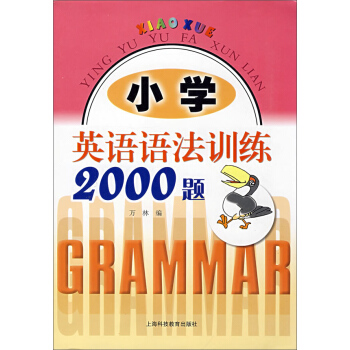
![丽声唱学自然拼读 第三级至第四级套装(套装共4册 点读版 附CD光盘2张) [4-9岁] pdf epub mobi 电子书 下载](https://pic.windowsfront.com/11519004/53eabeefN79dd6a87.jpg)
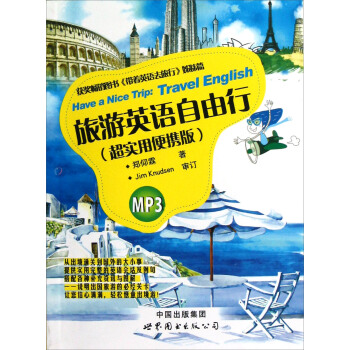

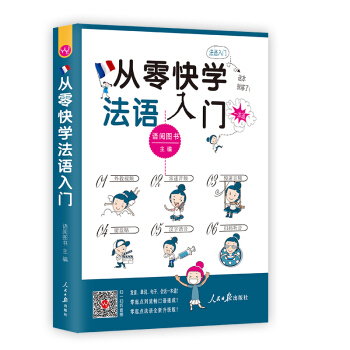
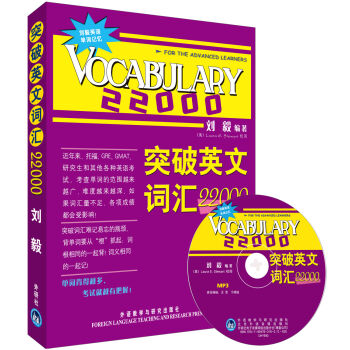

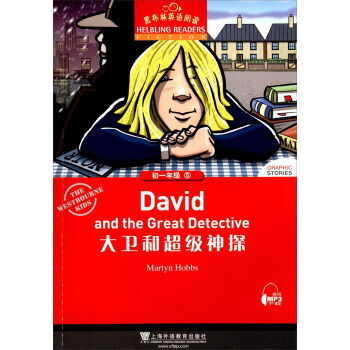
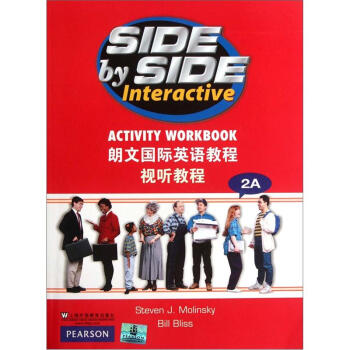
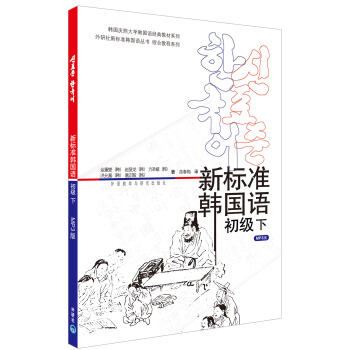
![新概念英语配套辅导讲练测系列图书·新概念英语1:同步听力训练(新版,附光盘) [New Concept English] pdf epub mobi 电子书 下载](https://pic.windowsfront.com/11506499/53d22944N80341760.jpg)


